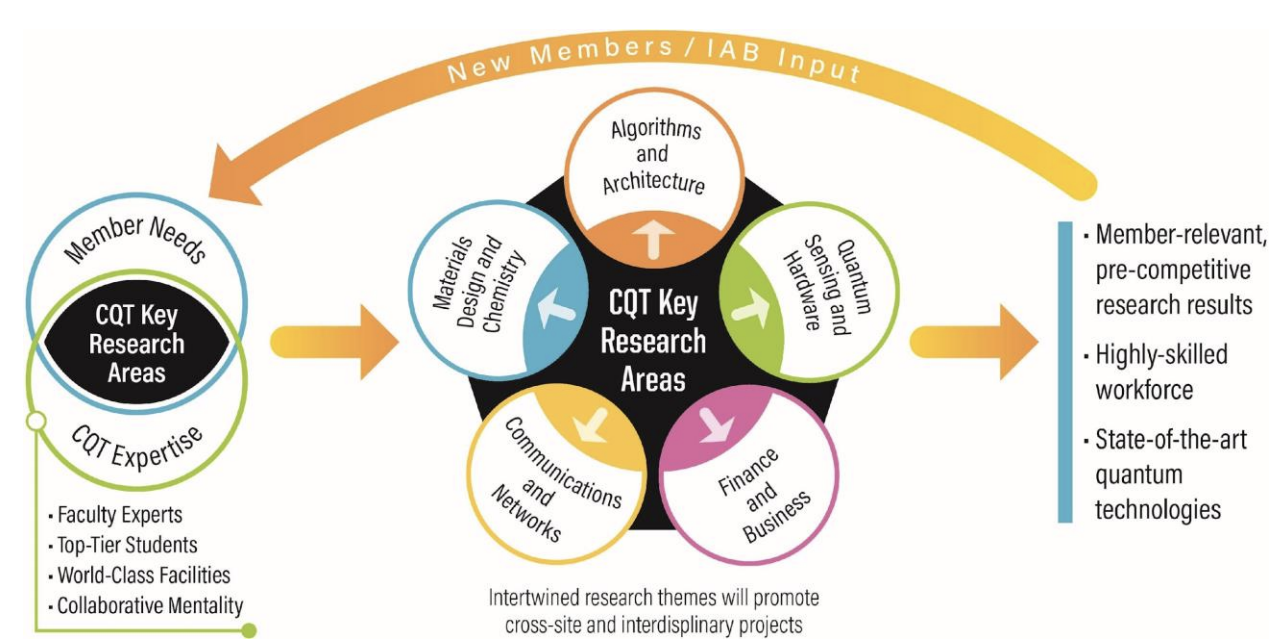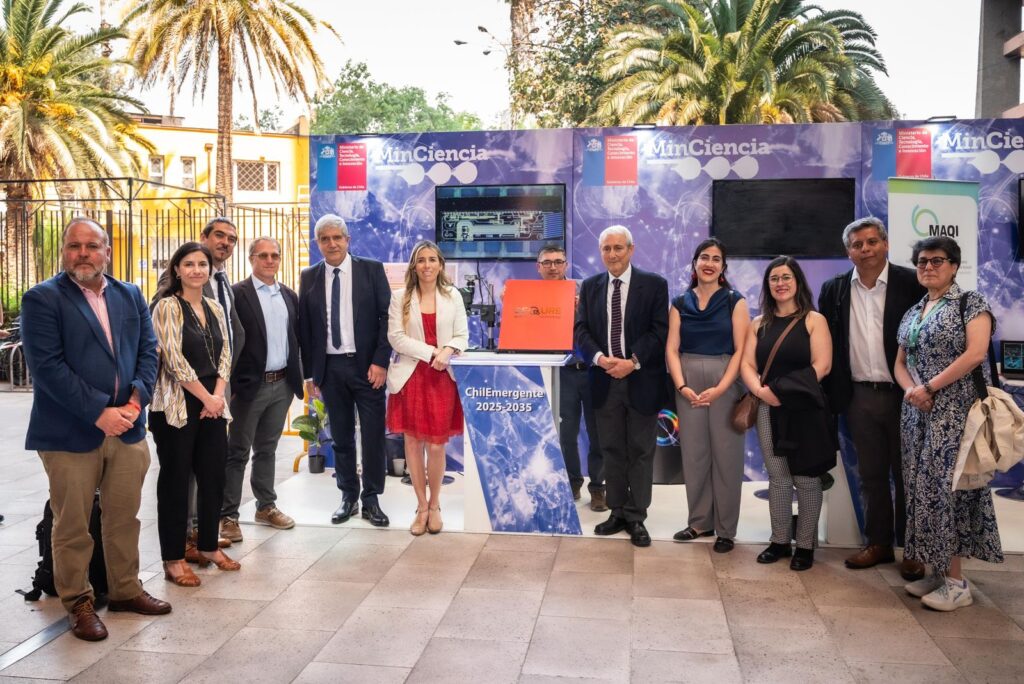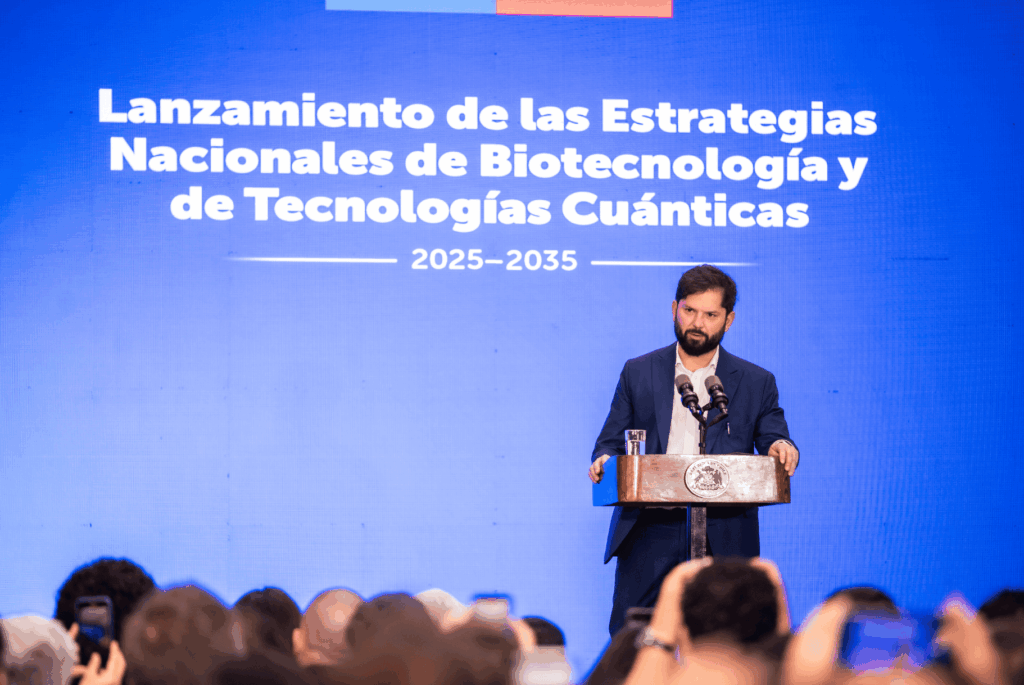Insider Brief
- The U.S. Center for Quantum Technologies (CQT), a multi-university consortium supported by the National Science Foundation, is connecting academia, industry, and government to accelerate quantum research and commercialization.
- According to the paper, CQT brings together Purdue University, Indiana University, and the University of Notre Dame with 12 corporate and federal partners to advance research in quantum computing, sensing, communications, and workforce development.
- Researchers affiliated with the consortium are developing quantum–AI hybrid algorithms, studying quantum materials and photonic systems, and expanding educational programs to prepare a quantum-ready workforce while seeking to grow industry participation.
Scientists and business leaders in the United States are doggedly building comprehensive efforts that can bridge academic research with commercial quantum applications. The U.S. Center for Quantum Technologies, known as CQT, is one of the key builders guiding this quantum bridge project and a recent white paper in arXiv published by the Center’s members offers a glimpse into how these collaborations are welded together to bring quantum tech to market.
CQT links Purdue University, Indiana University and the University of Notre Dame in a coordinated initiative backed by the National Science Foundation, according to the study. The program brings together 12 industry and government partners — including Amazon Web Services, D-Wave, Eli Lilly, Infleqtion, L3Harris, and the Air Force Research Laboratory — to accelerate quantum innovation and develop a trained workforce ready for the coming era of quantum information systems.
According to the paper, CQT was established in 2022 under the National Science Foundation’s Industry-University Cooperative Research Centers program, a framework that promotes applied research through shared governance and joint funding. Its three-university structure allows collaboration across quantum science, engineering and computing.

“Quantum technologies are rapidly transforming the landscape of computation, communication, sensing, and security. The second quantum revolution—centered on the manipulation of quantum states for practical applications—requires coordinated efforts across academia, industry, and government,” the team writes.
A National Lab-to-Market Model
Researchers from the consortium are tackling problems that connect laboratory advances with industrial deployment, from quantum computing algorithms to next-generation sensors and photonic materials, according to the paper. The Center’s goal is to make quantum technologies both scientifically rigorous and commercially viable.
Its founding institutions are distributing tasks based on their strengths. The center draws on complementary strengths in quantum science, engineering and computing across Purdue University, Indiana University and the University of Notre Dame.
The consortium model ensures that each project is influenced by industry needs and reviewed by government stakeholders who can apply the results to real-world challenges.
Quantum AI and Computing Research
Among CQT’s early projects is work at the intersection of quantum computing and artificial intelligence. Researchers affiliated with Purdue and Indiana University have developed a way to map the dense, high-dimensional data structures used in large language models (LLMs), such as GPT-4 or Claude 4, into compact quantum states. These so-called embeddings, which represent the meaning and relationships between words, are seen as the building blocks that could allow generative AI systems to understand and produce language.
Translating them into quantum form means that some AI computations could be run on quantum processors more efficiently. The experiments tested this mapping using IBM’s superconducting quantum computer, ibm_kyoto, as well as simulated environments. The study showed that the translation from classical to quantum states preserved almost all of the original information, suggesting that future language-processing tasks could use hybrid systems that pair classical machine learning with quantum hardware.
Researchers also explored hybrid quantum–classical algorithms for solving graph optimization problems—tasks that arise in logistics, finance, and cybersecurity. Using D-Wave quantum annealers and QuEra neutral-atom processors, the teams developed methods that divide complex problems into smaller, separable parts, making them feasible for current-generation quantum machines known as NISQ (Noisy Intermediate-Scale Quantum) systems. The same mathematical approaches are being adapted to locate vulnerabilities in software by expressing code logic as quantum optimization problems.
Expanding the Quantum Frontier in Materials and Light
CQT researchers are not limiting their focus to computation, reporting in the paper that teams have used quantum annealers to simulate complex magnetic behavior, uncovering quantum coarsening dynamics, which are sometimes described as patterns that evolve in systems too intricate for classical computers.
Experimental work used neutron scattering and simulations to show how atomic defects stabilize exotic magnetic states in materials known as frustrated magnets. Other researchers demonstrated that thin films made from cobalt-based molecules can switch conductivity when exposed to light, suggesting applications in light-controlled electronics. Experiments using solid neon and argon as hosts for single electrons and ions are being explored as ultra-clean environments for quantum bits, or qubits, potentially reducing noise and increasing stability.
The consortium is also advancing research on photonic quantum technologies, using light as a carrier of quantum information. Projects have created superradiant and subradiant quantum states in molecules, engineered two-dimensional Rydberg exciton arrays in cuprous oxide and designed photonic structures that enhance light–matter interactions, according to the paper.
In plain language, these platforms could one day serve as the backbone for quantum networks and ultra-secure communications.
Industry Partnerships and Workforce Development
What sets CQT apart from most university research centers is its governance structure, in which companies and government agencies not only fund projects but also help set research priorities. The current membership spans technology, defense and pharmaceuticals, including AWS, D-Wave, Infleqtion, Cummins, Eli Lilly, Peraton, Hewlett Packard Enterprise, and Quantum Computing Inc. These partners gain early access to discoveries and talent while providing feedback that helps translate laboratory findings into usable technologies.
Each project includes student researchers who receive mentoring from industry and government scientists. The Center’s approach aligns with national workforce goals that emphasize preparing scientists and engineers to apply quantum knowledge across sectors, from manufacturing to national security. In addition to graduate and undergraduate involvement, CQT has also begun outreach to high schools, sending graduate students to introduce quantum science to younger audiences and spark early interest in the field.
As for next steps, while the paper outlines no specific next-phase projects, the paper signals that CQT intends to expand its membership, broaden its educational programs and continue advancing scalable quantum technologies through coordinated research and industry engagement.
The researchers write: “Through its multi-university collaboration, strategic partnerships with industry and government, and commitment to education, CQT is advancing the frontiers of quantum science and engineering. As quantum technologies continue to evolve, the Center’s integrated approach will play a critical role in shaping the future of science, technology, and society.”
To learn more about CQT, visit: https://www.purdue.edu/cqt/. To learn more about the NSF IUCRC program, visit: https://iucrc.nsf.gov/centers/center-for-quantum-technologies/.
About The Quantum Insider
The Quantum Insider is recognized as the world’s leading source for timely quantum computing news, industry insights, and market intelligence. Our editorial team delivers trusted analysis to researchers, investors, and industry leaders.
















